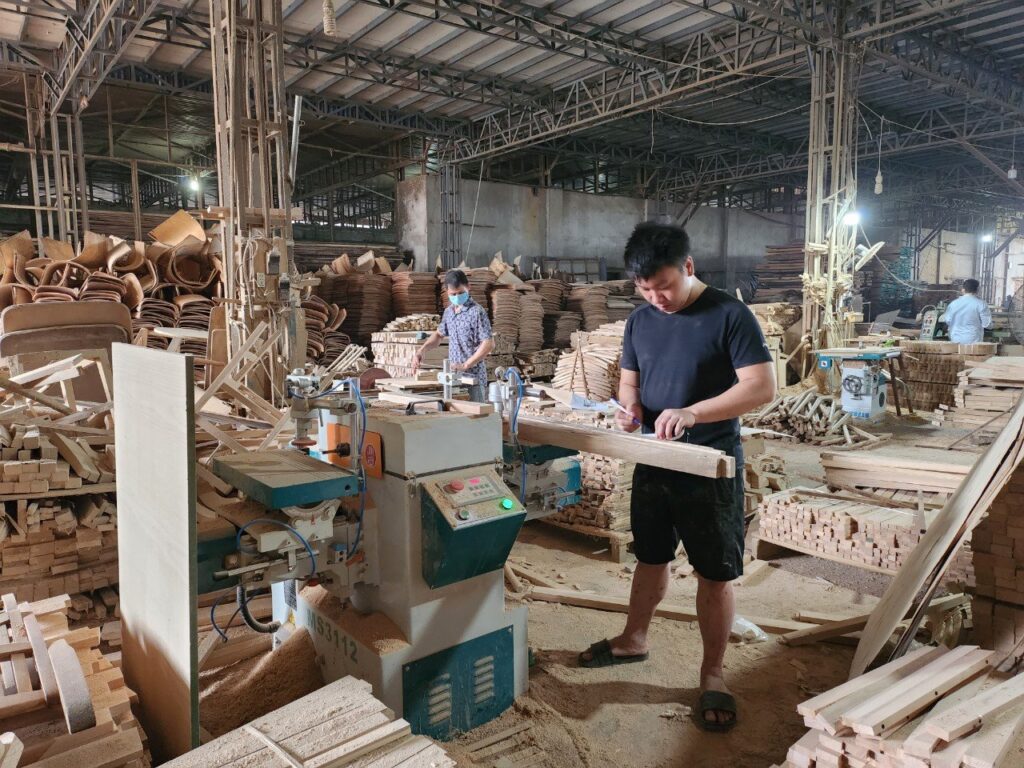
According to the General Department of Customs, in the first quarter of 2023, Vietnam’s export turnover of wood and wood products only reached US$ 2.813 billion, down by 30% compared to the same period in 2022. Export turnover of timber products reached US$ 1.823 billion, down by 40.1%.
The sharp decline in the export of wood and wood products is due to the high cost of input fuel and global energy, which has impacted the production costs of wood enterprises. The inflation rate is still high, and monetary policy has not been loosened. The slow recovery of the world economy and the collapse of some banks in the world have had a particular impact on the trend of tightening spending, buying furniture in some major markets such as the USA and EU, causing demand for Imports from these markets to fall sharply.
According to the United States International Trade Commission (USITC), US wooden furniture imports in the first two months of this year reached US$ 3.3 billion, down by 20.4% compared to the same period in 2022.
The reopening of China also creates competitive pressure on the wood product industry, especially Vietnam’s furniture group, because China is still the world’s largest exporter of wooden furniture. The General Department of Customs estimated that the export turnover of wood and wood products increased slightly compared to March when reaching US$ 1.2 billion in April 2023, up 5.5% compared to March, but still decreased by 24.5 % compared to April 2022.
The Vietnam Timber and Forest Products Association (Viforest) forecasts that, with the current growth rate, the export turnover of wood and wood products in the first half of 2023 will decrease from 28% to 32% over the same period last year.

Vietnamese furniture can boost exports to India. Photo: Nguyen Thuy.
However, opportunities are still available if wood businesses seek to expand markets and improve competitiveness, focusing on product price criteria in Vietnam at reasonable levels for consumers, products following tastes, quality products, and good after-sales policy.
Along with that is restructuring and reorganizing the production of enterprises, focusing on technological innovation, perfecting the production management system, and improving the efficiency and quality of human resources. To step up the production of products using domestic raw materials to reduce costs and enhance the competitiveness of products.
Faced with great difficulties in the market due to high global inflation, Vietnam’s exports of wood and wood products are falling sharply. Vietnam’s wood industry strives to find new markets. The fact shows that in the past time, the Vietnamese wood industry has been trying to find and expand to new and potential markets such as India, and the Middle East … At the end of April, more than 50 Vietnamese furniture enterprises joined together the webinar “Indian furniture export market: Market size and export potential”, organized by the Handicraft and Woodworking Association of Ho Chi Minh City (HAWA).
In 2022, the Indian furniture market is worth US$ 23.12 billion and is predicted to grow at a CAGR of 10.9% from 2023 to 2028. The size and demand of the furniture market are increasing, and India is considered a potential new market for Vietnamese furniture exporters.

 Tiếng Việt
Tiếng Việt




